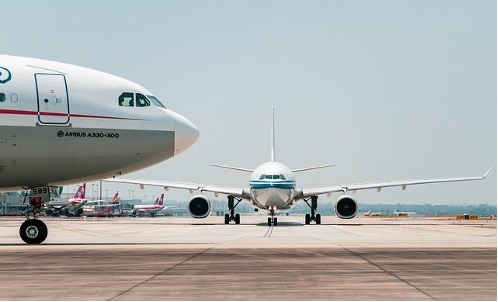 If you’ve never flown privately before, you might not realize the access, exclusivity, and luxury it affords. Flying commercially can be luxurious, especially if you book first-class, but you cannot be protected from various factors — no matter how much you spend. You’re still subject to the whims of the airline, and there’s very little distance between you and hours of discomfort.
If you’ve never flown privately before, you might not realize the access, exclusivity, and luxury it affords. Flying commercially can be luxurious, especially if you book first-class, but you cannot be protected from various factors — no matter how much you spend. You’re still subject to the whims of the airline, and there’s very little distance between you and hours of discomfort.
There are so many considerations to make when deciding whether to fly first-class or private. Below, we’ve compiled the ultimate guide to the biggest differences between the two, exploring factors like cost, flexibility, aesthetics, and comfort. Let’s take a look!
Where You Want, When You Want
Commercial flights operate on fixed schedules, which means passengers must adapt their plans to the airline’s timetable. For instance, if you’re flying with Delta, you’ll need to arrive at the airport several hours in advance to account for check-in, security, and boarding processes. Delays and cancellations often further disrupt travel plans, meaning you can never truly relax before a flight, especially if you have important plans.
Flying privately, on the other hand, is synonymous with flexibility. Companies like Air Charter Service allow travelers to choose their departure time, eliminating the stress of commercial schedules. Private jet clients usually arrive at the airport just 15 minutes before takeoff, and the plane departs on time every time. This flexibility makes private aviation perfectly suited to business executives.
First-Class Comfort And Beyond
A commercial flight’s comfort depends entirely on the class you book and the chosen airline. Some admittedly few, airlines have a perfectly spacious and comfortable economy class. Usually, however, passengers face cramped seating, limited legroom, and minimal refreshment options.
First-class cabins on carriers like Delta, however, reserve more spacious seating, premium meal options, and dedicated service. But, even here, WiFi can be unreliable, and you cannot guarantee who you’re seated next to.
Private jets provide a totally different league of comfort and privacy. Enjoy personalized service, customized interiors, and complete privacy. Many jets are equipped with reclining leather seats, in-flight entertainment systems, and gourmet catering tailored to the client’s preferences. The ability to customize the whole experience sets private jets apart from their commercial counterparts.
It Costs To Fly the Best
The most noticeable distinction between commercial and private flying is the cost. Commercial flights are significantly more affordable because airlines spread the cost of operating the aircraft across hundreds of passengers. For example, Delta Air Lines, one of the largest commercial carriers, offers tickets ranging from economy class to first-class cabins. The average economy-class ticket for a domestic flight in the U.S. costs around $385, while first-class tickets can go up to $1,200, depending on the route.
In contrast, private flying is a premium service that comes with a hefty price tag. Chartering a private jet through a company like Air Charter Service can cost anywhere from $2,500 in a Cessna Citation to $15,000 per hour of flight in a Boeing BBJ. For example, a round trip from New York City to Miami on a light jet could cost around $20,000. While these costs are prohibitive for most, private aviation offers unparalleled flexibility and exclusivity.
Accessibility and Destinations
Commercial airlines serve major airports across the globe, making them ideal for most travelers. However, if you’re looking to avoid the queues, or get a little closer to your final destination, then commercial airports can be full of inefficiencies. Flying commercially to Aspen, for example, requires navigating through Denver International Airport and a four-hour transfer. However, if you fly privately into Aspen/Pitkin County Airport, you’ll be on the slopes in just half an hour. A private jet can save you half a day, making all the difference if you’re short on time.
Time Efficiency
If you’re going on vacation, time is precious. If you’re in business, time is money. Whatever your outlook, making the most of your time is absolutely vital. Commercial flights require passengers to adhere to strict schedules, arrive at airports hours before departure, and often endure layovers. A commercial flight from Boston to Los Angeles might involve a layover in Dallas, adding many hours to the journey.
In contrast, private jets remove layovers and work around your schedule. A direct flight from Boston to Los Angeles on a private jet saves significant time, allowing travelers to focus on their priorities, be it precious family time or last-minute presentation prep.
The Bottom Line
The key differences between commercial and private flights are flexibility, comfort, and cost. For some, flying privately is as essential to their business as fresh capital; there are some elites who wouldn’t dream of flying commercially. However, there are also some arguments for flying first class instead. It’s usually more cost-effective and includes many of the comforts that you’ll find in a private jet.
Now that you understand the differences between the two, it should be much easier to decide which option best suits your travel needs.






